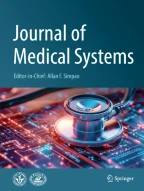Abstract
Computerized information systems, especially decision support systems, have become an increasingly important role in medical applications, particularly in those where important decision must be made effectively and reliably. But the possibility of using computers in medical decision making is limited by many difficulties, including the complexity of conventional computer languages, methodologies and tools. Thus a conceptual simple decision making model with the possibility of automating learning should be used. In this paper we introduce a cardiological knowledge-based system based on the decision tree approach supporting the mitral valve prolapse determination. Prolapse is defined as the displacement of a bodily part from its normal position. The term mitral valve prolaps (PMV), therefore, implies that the mitral leaflets are displaced relative to some structure, generally taken to be the mitral annulus. The implications of the PMV are the following: disturbed normal laminar blood flow, turbulence of the blood flow, injury of the chordae tendinae, the possibility of thrombus's composition, bacterial endocarditis, and finally hemodynamic changes defined as mitral insufficiency and mitral regurgitation. Uncertainty persists about how it should be diagnosed and about its clinical importance. It is our deep belief that the echocardiography enables properly trained experts armed with proper criteria to evaluate PMV almost 100%. But unfortunately, there are some problems concerned with the use of echocardiography. In that manner we have decided to start a research project aimed at finding new criteria and enabling the general practitioner to evaluate PMV using conventional methods and to select potential patients from the general population. To empower one to perform needed activities we have developed a computer tool called ROSE (computeRised prOlaps Syndrom dEtermination) based on algorithms of automatic learning. This tool supports the definition of new criteria and the selection of potential PMV-patients.
Similar content being viewed by others
References
Anderson, H.R.,et al., Clinicians Illustrated Dictionary of Cardiology Science Press, London, 1991.
Markiewicz, W.,et al. Mitral valve prolaps in one hundred presumably young females.Circulation 53(3):464–473, 1976.
Barlow, J.B.,et al. The significance of late systolic murmurs.AHJ 66:443–452, 1963.
Devereoux, R., Diagnosis and prognosis of mitral valve prolaps.New Engl. J. Med. 320(16):1077–1079, 1989.
Quinlan, J.R., Decision trees and decisionmaking,IEEE Trans. Syst. Man Cybern. 20(2):339–346, 1990.
Kokol, P.,et al., Spreadsheet software and decision making in nursing.Nursing Informatics '91, Honvenga, E.J.S.,et al. (eds.), Springer Verlag, 1991.
Bigec, M., Kancler, K., Kokol, P., and Mernik, M.,The Application of Decision Trees in Common Body Development Determination: Learning From Examples, MEDINFO '89, Barber, B.,et al. (eds.), North Holland, 1989.
Kokol, P., Paper in preparation.
Author information
Authors and Affiliations
Rights and permissions
About this article
Cite this article
Kokol, P., Mernik, M., Završnik, J. et al. Decision trees based on automatic learning and their use in cardiology. J Med Syst 18, 201–206 (1994). https://doi.org/10.1007/BF00996704
Issue Date:
DOI: https://doi.org/10.1007/BF00996704
